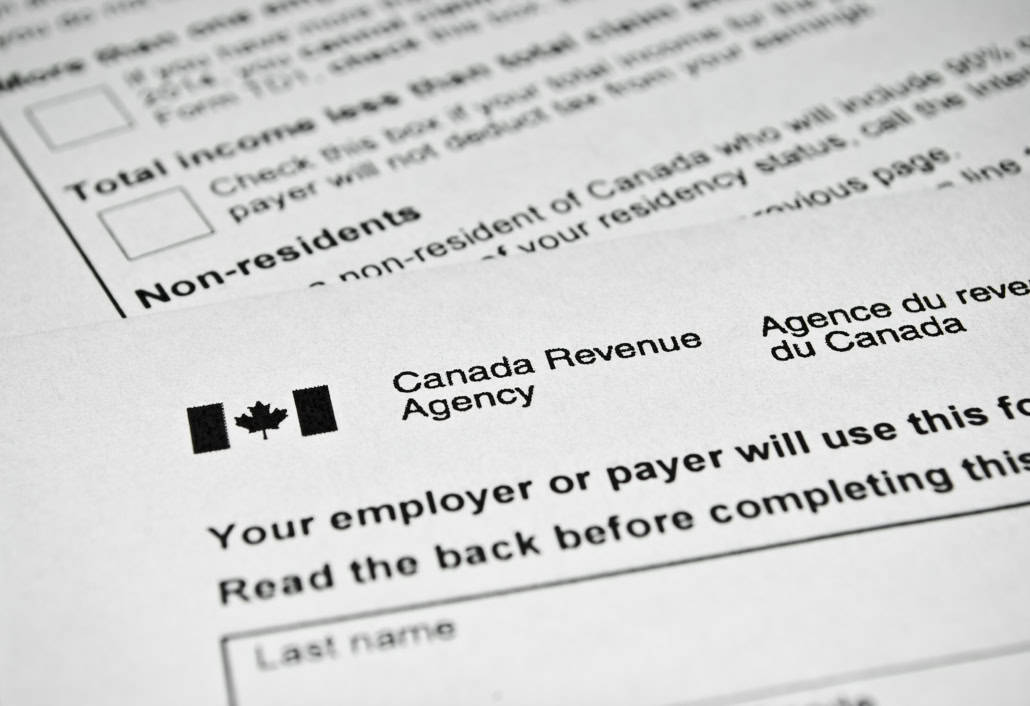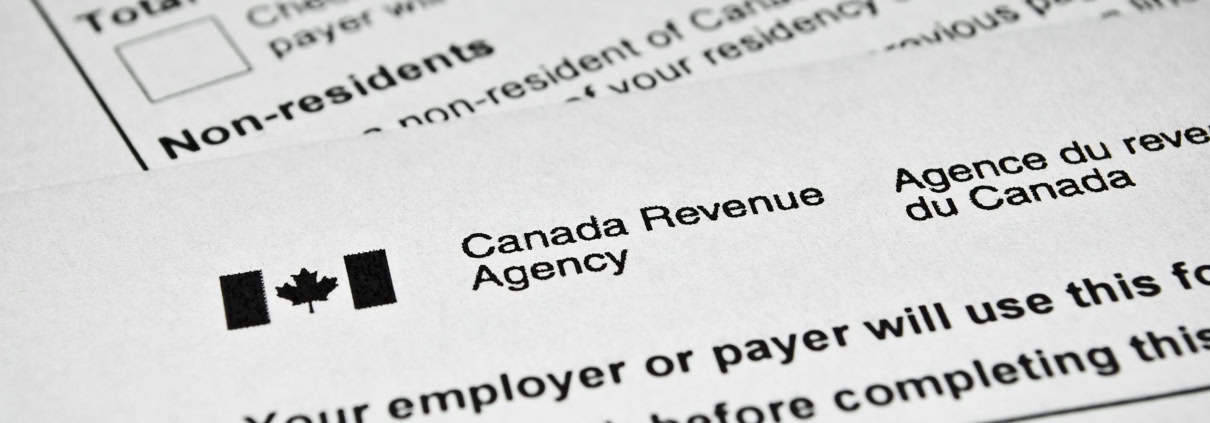March tax news: CRA red flags, a Netflix tax—and more

TEN COMMON TAX MISTAKES
What are the most common areas where Canada Revenue Agency auditors find errors that they can assess?
Here are some of the most common tax problems or mistakes that people make, and for which tax assessments or reassessments may be issued. Watch out for them!
Meals and entertainment: If you are deducting expenses — whether for a corporation, or for yourself if you are self-employed, or as deductible employment expenses where you’re an employee — expenses for meals and entertainment are normally limited to 50% of the amount you pay (although there are some exceptions). If you deduct the full amount of that restaurant meal, you’re leaving yourself open for reassessment! Of course, if you cannot show that the restaurant meal was for a business purpose (or qualifies as an allowable employment expense), you will get no deduction at all, rather than 50%.
Shareholder appropriations and shareholder loans: If you take money or property out of your company without declaring a (taxable) dividend or paying yourself a (taxable) salary, you will normally be taxed on the value of what you have taken out — even if you just borrowed the money. Using the corporation’s property without paying enough will also trigger tax. These issues are a favourite target of auditors when auditing small owner-managed companies. There are a number of exceptions and ways to avoid the problem, but this can be a dangerous tax trap.
Income splitting: attribution rules and TOSI. If you lend or give money, investments or other property to your spouse or child under 18, income earned from that property (e.g., interest, dividends, rent) will be “attributed” back to you and taxed in your hands, rather than in the hands of your spouse or child. Also, if you arrange for your child or even an adult family member to get dividends from a corporation, then even if the attribution rules do not apply, the Tax on Split Income (TOSI) may impose tax at the top marginal rate, for which you and that person may be jointly liable. The TOSI rules, which were vastly expanded in 2018 from the former “kiddie tax”, are extraordinarily complex.
GST or HST input tax credit documentation: If you carry on business, you can in most cases claim an “input tax credit” for all GST or HST that you pay in the course of the business. Thus, you recover the sales tax from the CRA — either deducting it from GST/HST you collect or, if you do not collect enough GST/HST, getting a refund. However, if you do not keep detailed receipts that include prescribed information (including identification of what was supplied, the vendor’s Business Number and, in most cases, properly identifying you as the purchaser), your claims may be denied when the auditor comes calling. The same rules apply in Quebec for the Quebec Sales Tax (TVQ).
Automobile expenses: CRA auditors love to deny automobile expenses. If you are claiming business expenses or employment expenses for your car, make sure to keep a detailed logbook tracking the extent you use it for business or employment. (Driving from home to work usually doesn’t qualify, unless your home is a place of business for you.) If you can’t be bothered to keep a logbook, you run the risk of having your deductions for gas, repairs, insurance, car washes and oil changes denied entirely or severely curtailed.
Director’s liability: If you are a director of a corporation — anything from your own wholly-owned private corporation to a large public company — you may be on the hook if the company runs out of money. In particular, you can be assessed by the CRA for any unremitted payroll deductions (source withholdings for income tax, CPP contributions and EI premiums), and for any GST, HST or TVQ the company has failed to remit (or that the company received as a refund). Sometimes you can escape such an assessment via the “due diligence” defence, but this is uncertain and usually requires expensive legal representation. Make sure that any company you’re a director of is always up to date in its source deduction and GST/HST remittances! If you are at risk of being assessed, resign as soon as possible, and make sure your resignation is legally recorded in the government register of corporations. Once you resign, there is a two-year deadline beyond which the CRA cannot assess you as a director — provided you do not continue as a “de facto” director.
Spousal support: If you are paying support to an ex-spouse, make sure you are aware of the myriad rules and conditions that apply before the amounts you pay are deductible. Child support is not deductible (unless your arrangements predate May 1997 and have not been modified since then — very rare now since most child support stops around age 18). For spousal support to be deductible to you (and taxable to your ex-spouse), it must normally be paid as an “allowance”, with the recipient having discretion over its use, on a “periodic basis”, pursuant to a Court Order or a written agreement. There are other conditions and variations on these rules.
Transfer of property by a tax debtor: If husband H owes money to the CRA (or Revenu Québec), whether for income tax, GST/HST or some other tax, and transfers his interest in the family home — or anything else including money — to his wife W, then the government can assess W for H’s tax debt, up to the value of what was transferred (minus whatever W paid H for it). In most cases, transferring such property makes things worse, because the CRA or RQ can seize other assets from W for her new tax liability, not just the home or other property that was transferred. Another risk along the same lines: if H’s bank account has been frozen by the CRA, so he endorses his paycheques over to friend F who puts them into F’s bank account and immediately takes out the amount in cash and gives it to H, the CRA will assess F for the total deposits into F’s account made this way. F can defend against the assessment by convincing the CRA or the Tax Court that he had a binding legal obligation to pay back to H any amounts deposited — but in several reported Court decisions, F has lost such appeals.
Capital gain or income?: The difference between a capital gain (only half taxed) and an income gain (business profit) is significant. If you buy property such as real estate, and then sell it down the road for a gain that you report as a capital gain, expect the auditor to examine carefully your intentions. If your primary or even secondary purpose in buying the property was to sell it rather than to earn income from it, then your gain may become a fully-taxed business income gain. If you have bought and sold several similar properties, or if you held the property for less than a year, the auditor is very likely to treat your gain as income gain no matter what your reasonable explanation as to why you sold, and will likely assess you a 50% “gross negligence” penalty as well. The CRA has become very hard-line about this issue on sales of homes and condos.
House hoppers: Similar to the previous point above, if you’re in the home-building business, and you like to move into the homes you build, watch out! You may think that you don’t have to pay tax on the gain when you sell the home, but that’s not true. If you built the home to sell, then even if you live in it for a while, your profit will be fully taxed (just like #9 above), and you can’t claim the principal-residence exemption, which applies only to capital gains, not business income gains. Second, you will likely be hit with a GST or HST assessment for GST or HST on the full value of the home including the land, which becomes payable as soon as you move into the property (or rent it out), under the GST/HST “self-supply” rule. The CRA vigorously pursues “house hoppers” and has had great success in the Courts. Claiming that you really, really (really!) intended to live in the house for a long time, and only sold it because of unexpected reasons, won’t get you very far with the judge if you build homes for a living. And note that, since 2016, you must report the sale on your tax return to claim the principal-residence exemption, so you’re waving a red flag in front of the CRA if you do this year after year.

A NETFLIX TAX IS COMING — AND AN AIRBnB TAX, TOO
The federal government’s November 30, 2020 Economic Statement included detailed plans for a new requirement for non-resident businesses that sell to Canadian consumers to charge GST or HST on their sales.
Goods imported into Canada have been subject to GST since the GST was first introduced in 1991. However, services and intangible property, such as video streaming, can’t be stopped by Customs at the border because they are not physically brought across the border.
Technically, services and intangibles provided by non-resident businesses to consumers have been subject to GST (or HST) since 1991, but the obligation to report and self-assess this tax is on the consumer. In practice, almost no consumers report and pay the GST/HST.
This gives non-resident suppliers a competitive advantage over Canadian resident businesses, and deprives the government of much-needed revenues. Other countries have begun to impose a “Netflix tax” in recent years. Quebec introduced such a tax in 2019.
Canada is now expanding the GST/HST rules to catch non-resident businesses that sell to consumers, effective July 2021 (though the start date could be delayed). The rules will apply to any non-resident with more than $30,000 of sales per year to Canadian consumers.
Under the new rules, the supplier will determine Canadian residence, and the province of residence (to know what rate of GST or HST to charge), based on the customer’s address, with fairly complex rules that look at physical address, billing address, IP address, phone location, etc.
The new rules are expected to take effect July 1, 2021. They have not yet been passed by Parliament, but detailed legislative proposals were released with the Economic Statement.
Although the new rules are described as applying to “e-commerce supplies”, they will also apply to sales of goods to Canadian consumers, where the goods are kept in a warehouse in Canada and shipped from Canada. So expect some non-resident companies that ship goods to you to start charging GST/HST as well.
The new rule will also apply to accommodation platforms, like Airbnb, hotels.com and booking.com. Short-term accommodation is currently taxable, but a small property owner with under $30,000 of taxable revenues per year can currently stay out of the GST/HST system and not charge tax. Under the new rules, the “accommodation platform” will have to charge GST/HST.
THE DANGERS OF FILING A CORPORATE INCOME TAX RETURN LATE
Some small business owners get busy running their business, and do not get around to filing their company’s corporate income tax returns until long after they are due. Of course, in practice the owner usually hires an accountant for this process; what the owner fails to do is get the business’s records in enough order to provide them to the accountant in time.
There are penalties for filing returns late: usually 17% of the unpaid tax once a return is 12 months late.
Some business owners prepay their companies’ instalments in amounts they think are “about right”, so that they are not in debt to the CRA even though they have not gotten around to filing.
There is a serious danger in doing this.
If a corporate return is filed more than 3 years after the year-end — i.e., more than 2.5 years after its due date — then the CRA will tell you that it cannot refund any overpaid instalments, because subsection 164(1) of the Income Tax Act prohibits it.
It may be possible to get the CRA to transfer the unrefundable balance to a later year for which tax is owing, using Income Tax Act section 221.2. The CRA used to permit this. However, Form RC431 now requires the corporation to show why it was “unable” to file its return within the 3 years. This stringent test will be almost impossible to meet in many cases. (Representations have been made to the CRA to change this administrative requirement, and the CRA has promised for years that changes are coming, but little has happened.)
It is also possible to ask the CRA to extend the deadline for filing the return, based on the 2018 Federal Court of Appeal decision in Bonnybrook Park Industrial Development Co. The Court has told the CRA it has the legal right to do this, but the CRA so far has not developed any policy allowing it.
Even if you do not pay instalments, the same problem arises if the CRA issues an “arbitrary assessment” of the corporation because it has not filed, and then seizes funds from the corporation to pay that assessment. If the corporation then files its return more than 3 years after year-end, showing less tax owing, it likely will not be able to get a refund of the “overpaid” amount. (It might be able to argue in Federal Court that funds seized have not been “paid” by the corporation and so are not subject to the 3-year rule, but this is uncertain.)
So it’s important to get your corporation’s income tax return filed on time, or at least not overly late.

CHARITY DONATION RECEIPTS
As the 2020 filing deadline approaches, you need to make sure that any charitable donations you are going to claim are properly backed up with receipts that meet very specific technical requirements.
If you file electronically (or your accountant e-Files for you), you do not enclose the receipts with your return, but if you claim substantial donations, it is very likely the CRA will audit your return and write to you to request copies of the receipts.
The stringent requirements for donation receipts are set out in section 3501 of the Income Tax Regulations (which you can find on CanLii.org).
Receipts may be issued on paper, and mailed or delivered to you; or electronically, and sent by email or web link pickup.
Based on subsection 3501(1) of the Regulations, every receipt must contain the following to be valid:
(a) The name and address in Canada of the charity, as recorded with the CRA.
(b) The registration number (also known as a “Business Number”) assigned by the CRA to the charity. This takes the form of 9 digits, plus “RR” (for charity registrations), plus four digits for the branch number, usually 0001. Example: 123456789RR0001.
(c) The serial number of the receipt.
(d) The place where the receipt was issued.
(e) Where the donation is of money, the date on which — or the year during which — the donation was received by the charity.
(e.1) Where the donation is of property other than money:
(i) the day on which the donation was received;
(ii) a brief description of the property, and
(iii) the name and address of the appraiser of the property, if an appraisal was done.
(f) The date on which the receipt was issued.
(g) The name and address of the donor including, for an individual, the individual’s first name and initial. (Note that, for a couple who are married or are common-law partners, either one can claim the donation as long as one of them is named on the receipt.)
(h) The amount that is
(i) the amount of the donation, if it was money, or
(ii) if the donation is of property other than money, the fair market value of the property at the time the donation was made.
(h.1) A description of the “advantage”, if any, in respect of the donation and the amount of that “advantage”. This refers to any benefit you may have received in exchange for making the donation. For example, if you paid $500 for a ticket to a fund-raising dinner and the dinner was worth $100, the “advantage” is $100.
(h.2) The “eligible amount” of the donation. This is the amount of the donation minus the “advantage” above. In the above example, the “eligible amount” that you can claim for tax purposes would be $400.
(i) The signature of a responsible individual who has been authorized by the charity to acknowledge donations.
(j) The Canada Revenue Agency name and Internet website. This should appear as “www.canada.ca/charities-giving” or “www.canada.ca/organismes-bienfaisance-dons” on the receipt, according to the CRA.

CHARGING MANAGEMENT FEES
Management fees are often used as a way of moving income around between corporations within a corporate group. If Xco has losses and Yco is profitable this year, having Xco charge management fees to Yco can be a way of using up Xco’s losses, effectively consolidating the two companies’ income.
Technically, to be deductible to Yco, the fees need to be for work that Xco has done for Yco. The fees also need to be reasonable. In practice, CRA auditors are usually lenient in allowing Yco the deduction without requiring too much evidence of how much work Xco has done, as long as the companies are under the same ownership.
GST/HST may need to be charged on the fees, with Xco remitting the tax and Yco claiming an offsetting input tax credit. However, provided the two companies are under at least 90% common corporate ownership (both being owned by the same individual doesn’t work), they can file a Form RC4616 with the CRA, to elect for charges between them to be at “nil consideration”, meaning that no GST or HST needs to be charged and paid.
The above is a general description. In any given case you may wish to get professional advice as to whether the intercompany fees your companies are planning to charge are reasonable and will be deductible to the paying company.

AROUND THE COURTS
Tuition expense carry-forward did not apply to a non-resident who moved to Canada
University and other post-secondary tuition costs are normally eligible for an income tax credit — 15% federally plus a provincial credit, usually worth 20-25% in total. Where the taxpayer does not have enough tax to pay for the year — as is often the case for university students — the tuition expense can be carried forward and claimed in a later year. Tuition paid to a university outside Canada generally qualifies.
In Marino, 2020 TCC 50, Mr. Marino was a U.S. resident, and he spent 10 years at various U.S. universities, paying over US$159,000 in tuition fees from 2002 to 2011.
In 2012, Mr. Marino moved to Calgary. He tried to claim the tuition carryforward on his Canadian income tax return, to create a credit against his Canadian tax otherwise payable. The CRA denied his claim, and he appealed.
The Tax Court of Canada dismissed the appeal. The Court ruled that these tuition expenses did not qualify, as Mr. Marino was outside the Canadian tax system when he incurred the tuition costs.
***
This letter summarizes recent tax developments and tax planning opportunities; however, we recommend that you consult with an expert before embarking on any of the suggestions contained in this letter, which are appropriate to your own specific requirements.


